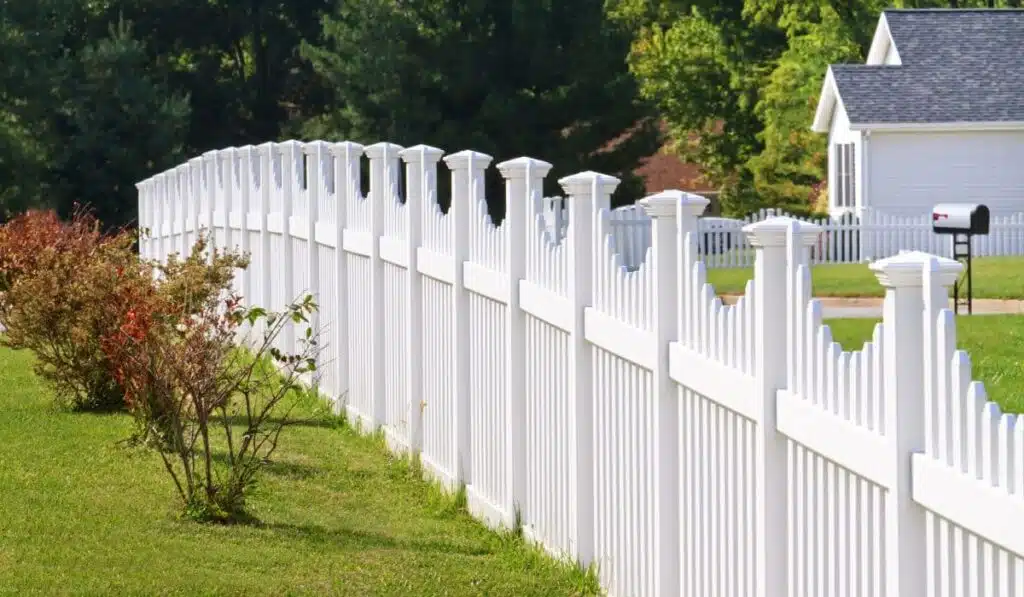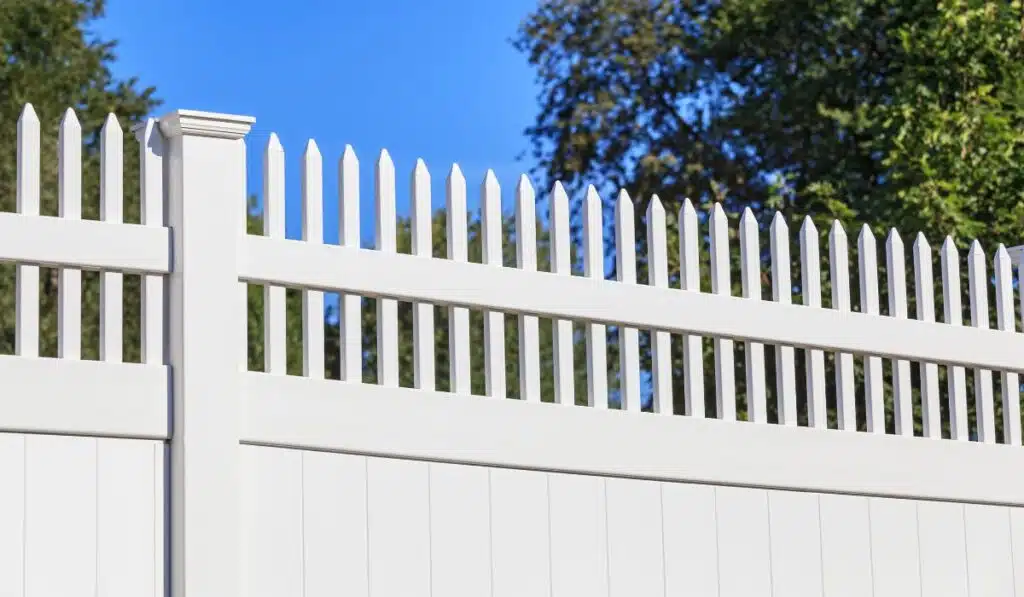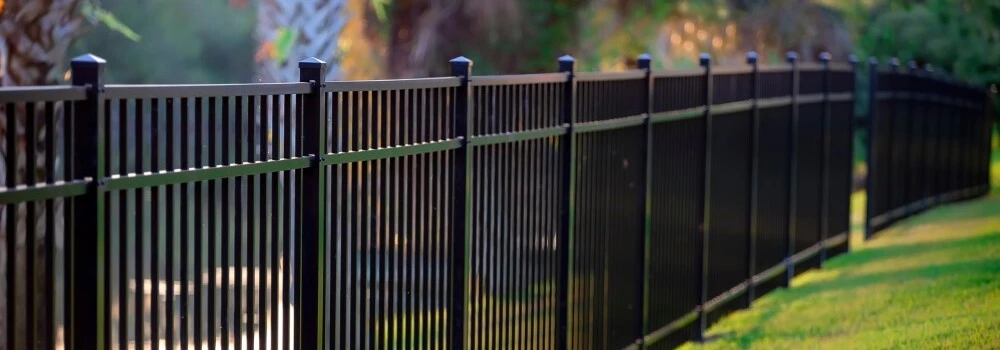
Exploring the Variety of Colors in Vinyl Fencing
Vinyl fencing has become a popular choice for homeowners and businesses alike, offering a blend of durability, low maintenance, and aesthetic appeal.
One of the most exciting aspects of vinyl fencing is the wide variety of colors available, allowing property owners to choose hues that perfectly complement their buildings and landscapes.
This article delves into the extensive range of vinyl fence colors, their benefits, and how to choose the right color for your needs.
The Evolution of Vinyl Fence Colors
In the early days of vinyl fencing, the color options were quite limited, with white being the predominant choice.
While white vinyl fences remain a classic and timeless option, advancements in manufacturing technologies have expanded the palette to include a broad spectrum of colors.
Today, homeowners and businesses can select from a range of neutrals, earth tones, and even vibrant hues.
Benefits of Colored Vinyl Fencing
Aesthetic Versatility: Colored vinyl fences can enhance the visual appeal of your property.
Whether you prefer the classic look of white, the rustic charm of wood-like browns, or the modern edge of grays and blacks, there is a color to match every architectural style and personal preference.
Customization: With a wide array of colors available, vinyl fencing allows for a high degree of customization.
This means you can create a unique look that sets your property apart from others in the neighborhood.
Fade Resistance: High-quality vinyl fences are designed to resist fading, ensuring that the vibrant color you choose remains bright and attractive for years to come.
This is achieved through the use of UV inhibitors and other advanced manufacturing processes.
Low Maintenance: Unlike wood fences that require regular painting or staining, colored vinyl fence retain their color with minimal upkeep.
Occasional cleaning with soap and water is usually sufficient to keep them looking their best.

Popular Vinyl Fence Colors
- White: The classic choice, white vinyl fencing provides a clean, crisp look that complements almost any home or landscape. It’s trendy for traditional and colonial-style homes.
- Beige and Tan: These neutral tones blend seamlessly with natural surroundings, offering a softer look than white. Beige and tan fences are ideal for homes with earthy color palettes.
- Gray: Gray vinyl fences have gained popularity in recent years, offering a modern, sophisticated appearance. They pair well with contemporary architecture and can be found in various shades, from light to dark.
- Black: For a bold statement, black vinyl fencing provides a striking contrast to greenery and bright flowers. It’s a popular choice for modern homes and commercial properties looking to make an impression.
- Brown and Wood Tones: Mimicking the appearance of wood without the associated maintenance, brown and wood-toned vinyl fences are perfect for those who love the look of wood but prefer the durability of vinyl. They come in various shades, from light oak to deep mahogany.
- Green: Blending naturally with landscapes, green vinyl fencing is an excellent choice for gardens, parks, and properties with extensive greenery.
- Custom Colors: Many manufacturers offer custom color options, allowing you to match your fence to specific color schemes or branding requirements. This is particularly beneficial for businesses and homeowners associations.
Choosing the Right Color for Your Vinyl Fence
Selecting the right color for your vinyl fence involves considering several factors:
- Home Exterior: Look at the colors used in your home’s exterior. Your fence should complement or enhance these colors rather than clash with them. For instance, if your home has warm tones, consider beige, tan, or brown. For cooler tones, gray or white might be more suitable.
- Landscape: Consider the natural surroundings. A fence that blends well with the landscape can create a harmonious look. Green or earth-toned fences work well in lush, wooded areas, while white or black can provide a striking contrast in more manicured settings.
- Architectural Style: Different architectural styles pair better with specific colors. Traditional homes often look best with classic colors like white or beige, while modern homes can handle bolder choices like black or gray.
- Neighborhood Norms: While you want your fence to reflect your taste, it’s also essential to consider neighborhood norms.
A bright red wall might be eye-catching, but it could also clash with the overall look of the neighborhood.
- Purpose: Think about the purpose of your fence. For privacy, darker colors like black or dark brown can create a more solid, impenetrable appearance.
For decorative purposes, lighter colors like white or beige can add to the aesthetic appeal.
Maintenance Tips for Colored Vinyl Fences
While vinyl fences are low-maintenance, keeping them in top condition requires some care:
- Regular Cleaning: Clean your fence periodically with a mild soap solution and a garden hose. This will remove dirt, pollen, and other debris that can accumulate over time.
- Avoid Harsh Chemicals: Harsh chemicals and abrasive cleaners can damage the fence’s finish. Stick to gentle cleaning solutions to maintain the color and integrity of your fence.
- Inspect for Damage: Regularly inspect your fence for any signs of damage, such as cracks or warping. Prompt repairs can prevent minor issues from becoming major problems.
- UV Protection: While most high-quality vinyl fences come with UV inhibitors, additional UV protectant sprays can provide extra protection against fading and sun damage.
Trends in Vinyl Fence Colors
As design trends evolve, so do preferences in vinyl fence colors. Here are some emerging trends:
- Dark and Bold Colors: Darker colors like charcoal, deep green, and navy blue are becoming more popular as homeowners seek to make bold statements with their fencing. These colors offer a modern, upscale look and can be particularly striking against a backdrop of greenery or a brightly colored home.
- Matte Finishes: Matte finishes are trending in interior and exterior design, and vinyl fencing is no exception. Matte colors reduce glare and provide a subtle, sophisticated look.
- Earthy Tones: As sustainability and harmony with nature become more critical, earthy tones like taupe, olive, and clay are gaining popularity. These colors blend seamlessly with natural landscapes and create a serene, cohesive appearance.
- Customizable Colors: With the rise of personalized design, more homeowners are opting for custom colors. This allows for perfect matching with specific architectural elements or unique personal tastes.
Conclusion
Vinyl fencing offers an extensive range of color options, providing endless possibilities for enhancing the aesthetic appeal of any property.
Whether you prefer classic white, sophisticated gray, natural wood tones, or bold, modern hues, there is a vinyl fence color to suit every style and preference.
By considering factors such as home exterior, landscape, architectural style, and maintenance needs, you can select a vinyl fence color that not only complements your property but also adds long-term value.
With its durability, low maintenance requirements, and eco-friendly attributes, colored vinyl fencing is an innovative and stylish choice for any fencing project.
Ready to explore the perfect vinyl fence color for your property?
Contact us at Bravo Fence Company today to get started on your project!
FAQs
How do I choose the right color for my vinyl fence?
Consider factors such as your home’s exterior colors, the surrounding landscape, your property’s architectural style, neighborhood norms, and the intended purpose of the fence (privacy vs. decoration). These factors can guide you toward selecting a color that enhances your property’s overall aesthetics.
What maintenance tips should I follow for colored vinyl fences?
Regularly clean your fence with a mild soap solution and inspect it for any damage. Avoid harsh chemicals that could damage the fence’s finish, and consider using additional UV protection to prevent fading over time.
Are there any current trends in vinyl fence colors?
Trends include darker and bolder colors such as charcoal and navy blue; matte finishes for a sophisticated look, and a growing preference for earthy tones like taupe and olive. Customizable colors are also famous for achieving personalized design goals.
What are the benefits of choosing colored vinyl fencing?
Colored vinyl fencing offers aesthetic versatility, customization options, fade resistance, and low maintenance. It enhances the visual appeal of your property while requiring minimal upkeep compared to traditional wood fencing.
How has the range of vinyl fence colors evolved?
Initially limited to white, vinyl fencing now includes a broad spectrum of colors ranging from neutrals and earth tones to vibrant hues. Advances in manufacturing technology have enabled these options, catering to various architectural styles and personal preferences.
Can vinyl fences be customized to match specific color schemes or branding requirements?
Many manufacturers offer custom color options for vinyl fencing, allowing homeowners and businesses to match their fences to specific architectural elements, corporate colors, or personal preferences. This customization option is particularly beneficial for creating a cohesive look across properties or adhering to branding guidelines.
How durable are colored vinyl fences?
Colored vinyl fences are designed to be highly durable, with color embedded throughout the material rather than applied as a surface coating. This ensures that the color remains vibrant and does not fade significantly over time, even with exposure to sunlight and weather elements.
Are there any environmental benefits to choosing vinyl fencing?
Vinyl fencing is considered environmentally friendly compared to traditional wood fencing because it does not require frequent painting or staining, which can involve harsh chemicals. Additionally, vinyl fences are often recyclable at the end of their lifespan, contributing to sustainable building practices.
Tags: Everything You Need to Know About Durable Vinyl Fencing, Everything You Need to Know About Vinyl Fence Colors, Everything You Need to Know About Vinyl Fence Installation, Everything You Need to Know About Vinyl Fence Panels, Everything You Need to Know About Vinyl Fence Styles, Explore Helpful Resources on Cost Of Vinyl Fencing, Explore Helpful Resources on Vinyl Fencing Vs Wood, Explore Helpful Resources on Vinyl Privacy Fences, Inspiration and Tips on Low Maintenance Vinyl Fences, Inspiration and Tips on Vinyl Fencing Benefits

